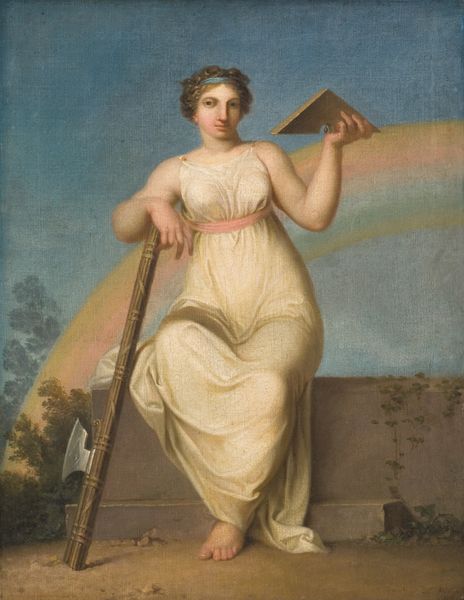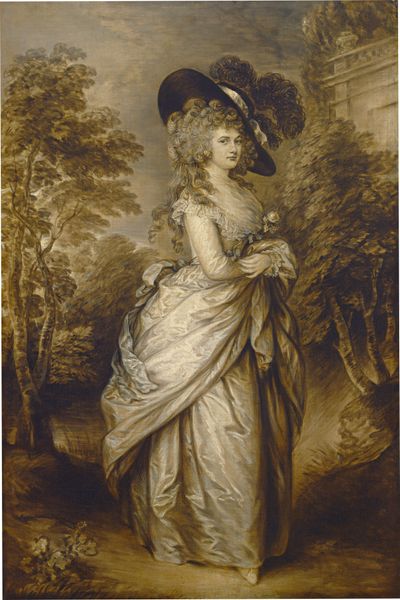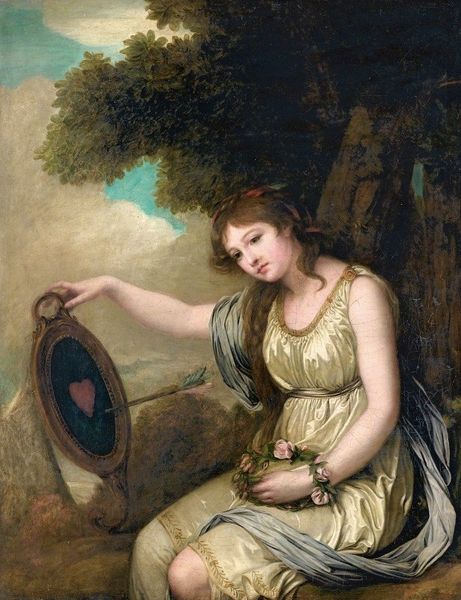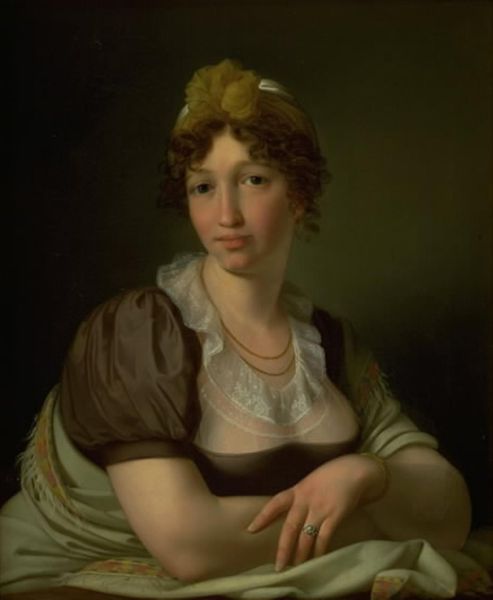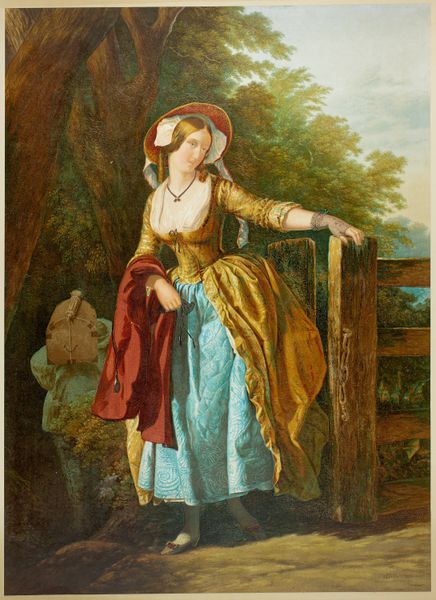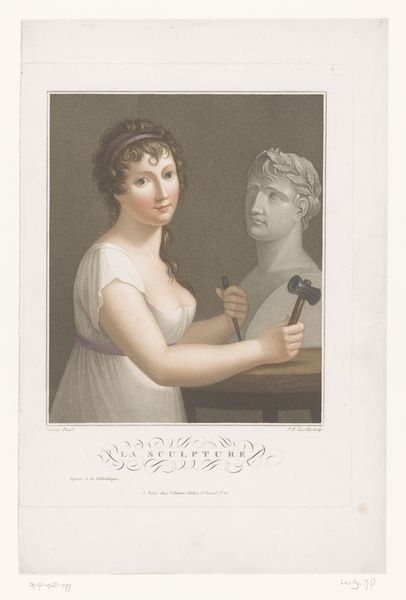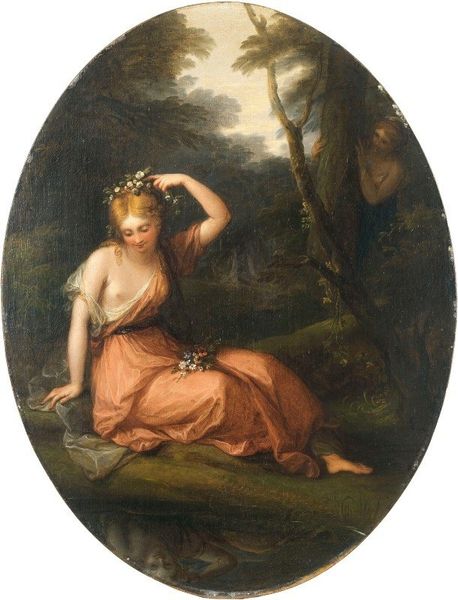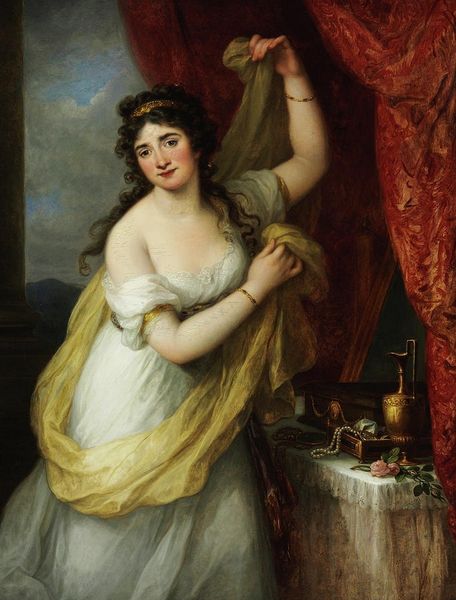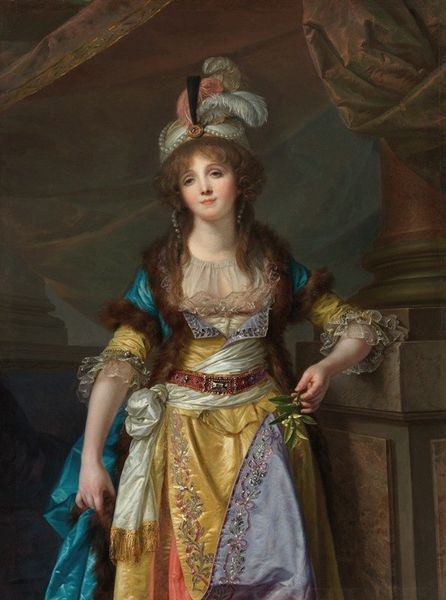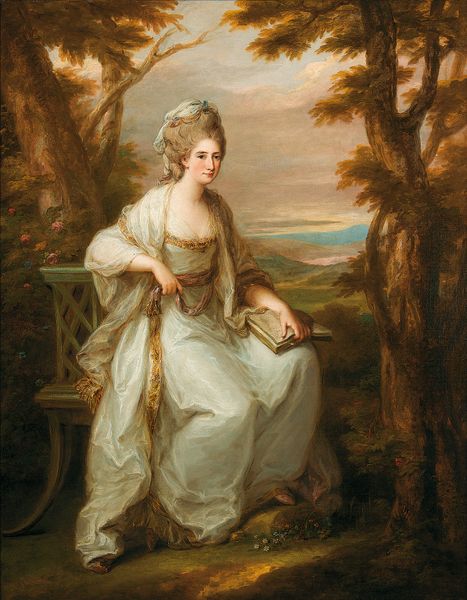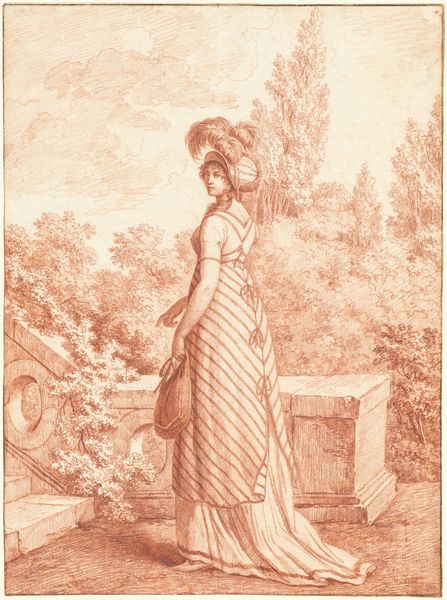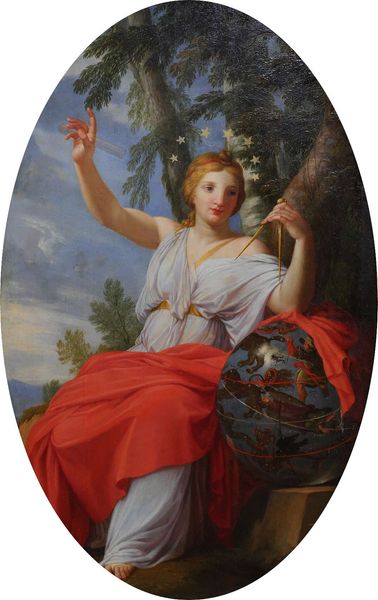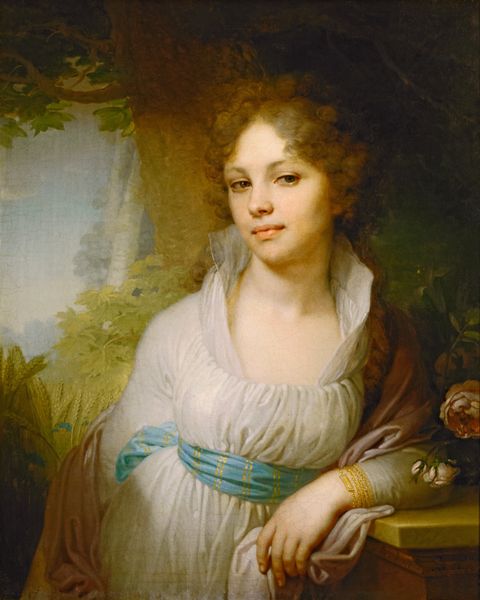
painting, oil-paint
#
portrait
#
neoclacissism
#
allegory
#
painting
#
oil-paint
#
figuration
#
history-painting
#
academic-art
Dimensions: 73 cm (height) x 57.5 cm (width) (Netto), 85.1 cm (height) x 68.9 cm (width) x 5.8 cm (depth) (Brutto)
Editor: Here we have Nicolai Abildgaard's "Philosophy. Allegorical Figure," painted around 1800. The oil paint gives the figure a certain soft glow, but I find the overall mood quite cool and detached. How do you interpret this work? Curator: It’s fascinating to view this through a critical lens. Abildgaard, deeply embedded in the Neoclassical movement, was actively engaged in the political climate of his time. Note the allegory of Philosophy itself—the statue of Isis with multiple breasts alludes to the idea of nature as a nurturing goddess, but at the same time alludes to the social constructs that define that power? The woman herself, is she the symbol of wisdom or a muse representing a patriarchal approach? Editor: That’s interesting. I hadn't thought about the implications of that feminine representation. Is the lack of direct engagement with the viewer also part of that construction? Curator: Precisely. The gaze averted suggests a deliberate distance, perhaps highlighting philosophy's detachment from everyday realities, or from a feminine, more connected way of thinking. How might we relate this to current conversations around gender roles and knowledge production, and who dictates that knowledge? Editor: I suppose it challenges the idea of philosophy as a neutral, objective pursuit. It hints at the power structures inherent in knowledge itself. Curator: Indeed. Consider, too, the symbolic objects—the sistrum, and the barely visible Taurus figure in the background. They aren't just aesthetic choices but potent symbols embedded in a specific socio-political moment. The era was pregnant with revolution and new ideas, how did it influence and shape the idea of Philosophy? Editor: That gives me a lot to think about in terms of art's engagement with society and power. Curator: Absolutely, understanding the painting’s context forces us to question not just the artwork but the world around us and how art plays into larger ideological forces.
Comments
No comments
Be the first to comment and join the conversation on the ultimate creative platform.
